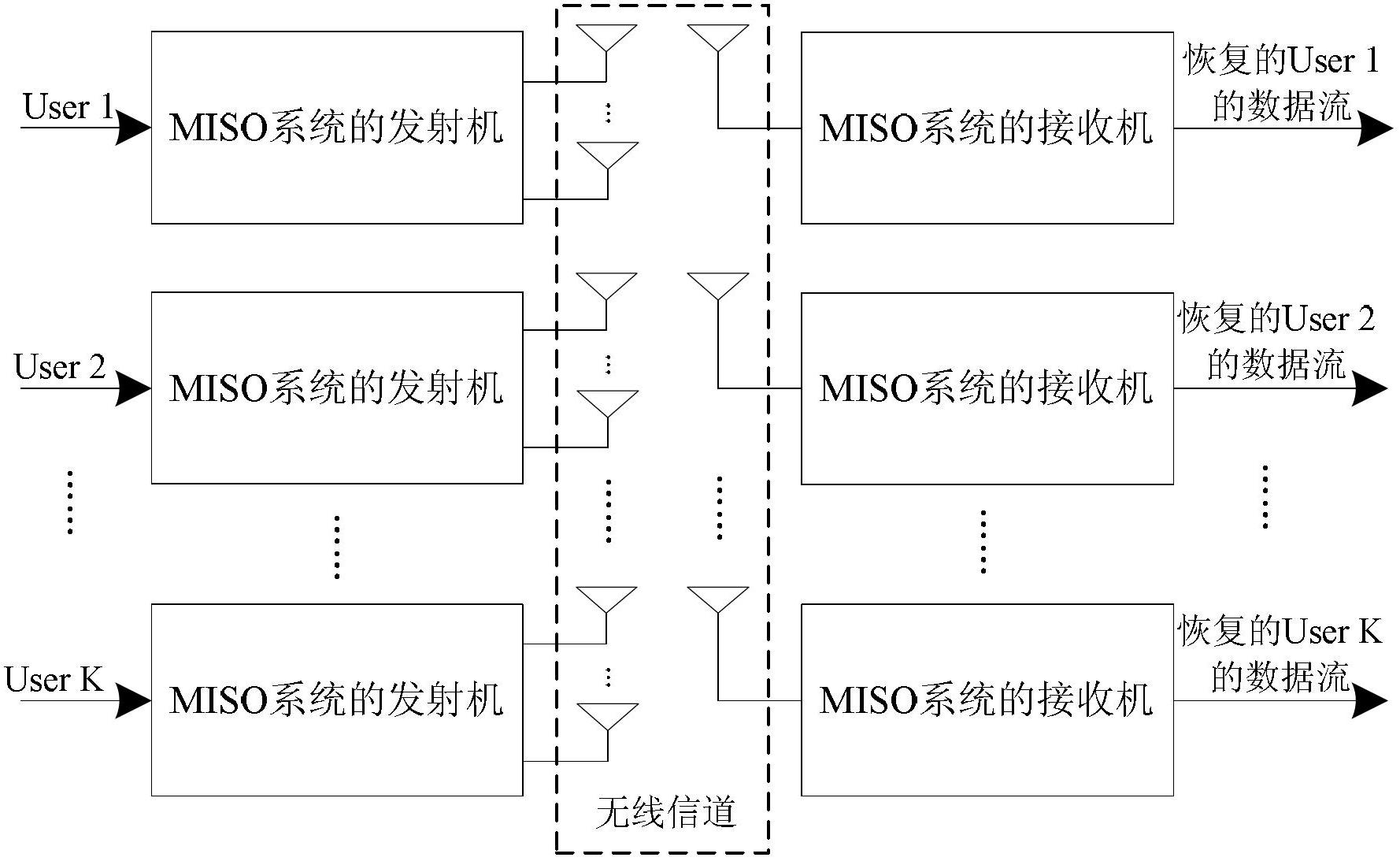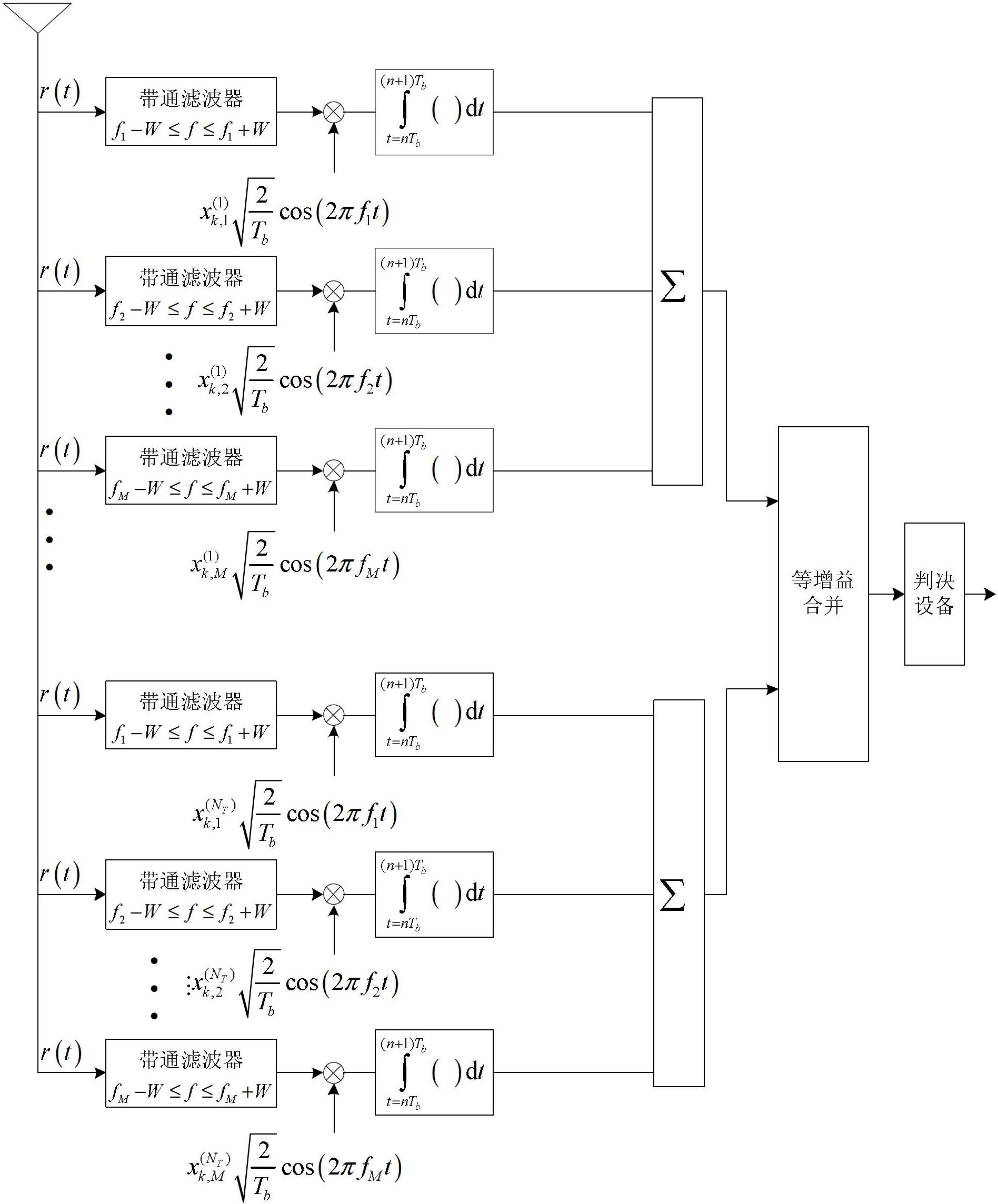Multi-carrier MISO system based on three-dimensional mutual-complementing code
A complementary code, multi-carrier technology, applied in the field of MISO system, can solve the problem of poor ability to resist multi-path interference and multi-user interference, and achieve the solution of eliminating multiple access interference and multi-path interference, reducing complexity and good practicability. Effect
- Summary
- Abstract
- Description
- Claims
- Application Information
AI Technical Summary
Problems solved by technology
Method used
Image
Examples
specific Embodiment approach 1
[0025] Specific implementation mode one: combine figure 1 Describe this embodiment, in the multi-carrier MISO system based on three-dimensional complementary codes of the present invention, user k uses a three-dimensional complementary code as a signature code, and each three-dimensional complementary code includes N T two-dimensional complementary code, for user k, its working process includes the following steps:
[0026] Step 1: At the sending end, use the transmitter of the MISO system to modulate the data to be sent into N T modulation signal, and then N T Channel modulated signal with N T The root antenna transmits to the wireless channel;
[0027] Step 2: At the receiving end, the receiver of the MISO system uses 1 antenna to receive the N transmitted to the wireless channel in step 1. T modulation signal.
[0028] The MISO system based on three-dimensional complementary codes includes k users, and each user's transmitter includes N T One transmit antenna and the ...
specific Embodiment approach 2
[0029] Embodiment 2: This embodiment is a further description of the three-dimensional complementary code-based multi-carrier MISO system described in Embodiment 1.
[0030] The generation method of described three-dimensional complementary code comprises the steps:
[0031] Step 1: Use two orthogonal matrices A and B with dimensions 2×2 to construct two sequences C of length 4 1 and C 2 :
[0032] C 1 =(b 11 A 1 , b 12 A 2 )=(c 11 , c 12 , c 13 , c 14 )
[0033] C 2 =(b 21 A 1 , b 22 A 2 )=(c 21 , c 22 , c 23 , c 24 ) (1)
[0034] Among them, the expression of the orthogonal matrix A is:
[0035] A = A 1 A 2 = a 11 ...
specific Embodiment approach 3
[0091] Specific embodiment three: this embodiment is different from the three-dimensional complementary code-based multi-carrier MISO system described in specific embodiment two in that, in the generation method of the three-dimensional complementary code, the third step is repeatedly executed, each time , the length of the basic code of the constructed complementary code is extended by 2 times.
[0092] We can also extend the length of the subcode, using the sequence obtained in formula (7) instead of generating the original complementary sequence C 1 , C 2 , and then use this sequence and the orthogonal matrix D to perform an operation in formula (6) to construct a complete complementary code whose length is extended by 2 times Extending the subcode length in this way will not change the number of subcodes contained in each code. The length of the complementary code subcode generated in this way will be extended with an exponent of 2 to become 2 chip lengths, 4 chip len...
PUM
 Login to View More
Login to View More Abstract
Description
Claims
Application Information
 Login to View More
Login to View More - R&D
- Intellectual Property
- Life Sciences
- Materials
- Tech Scout
- Unparalleled Data Quality
- Higher Quality Content
- 60% Fewer Hallucinations
Browse by: Latest US Patents, China's latest patents, Technical Efficacy Thesaurus, Application Domain, Technology Topic, Popular Technical Reports.
© 2025 PatSnap. All rights reserved.Legal|Privacy policy|Modern Slavery Act Transparency Statement|Sitemap|About US| Contact US: help@patsnap.com



